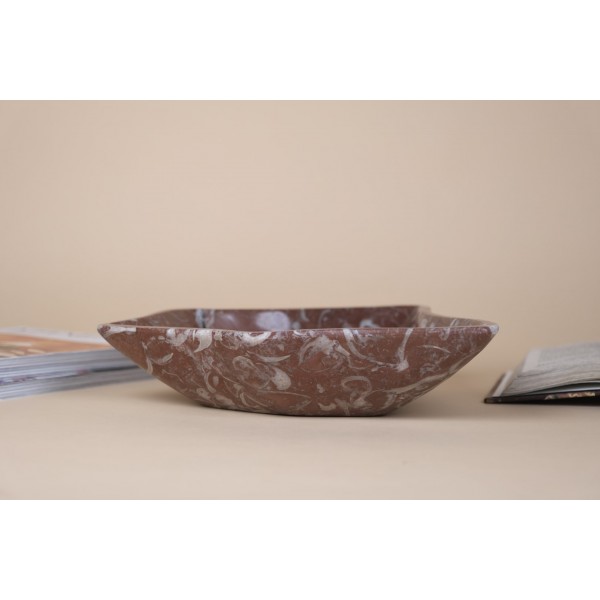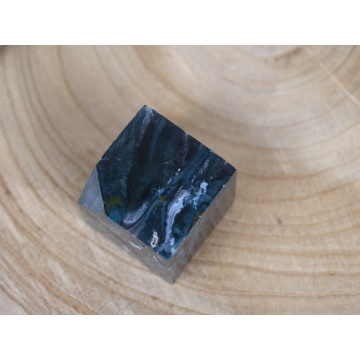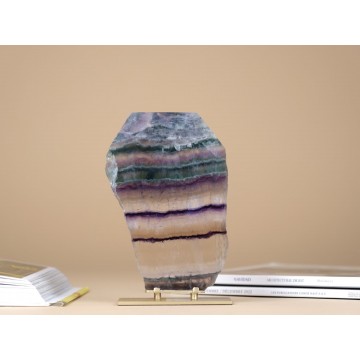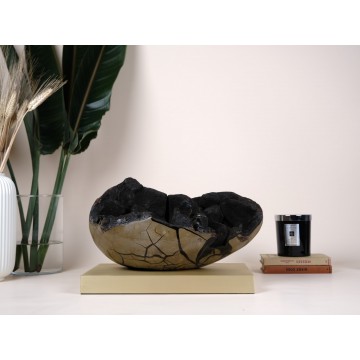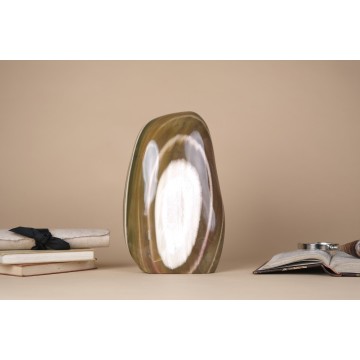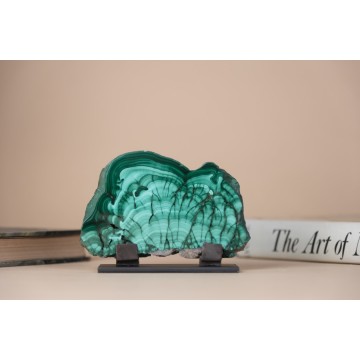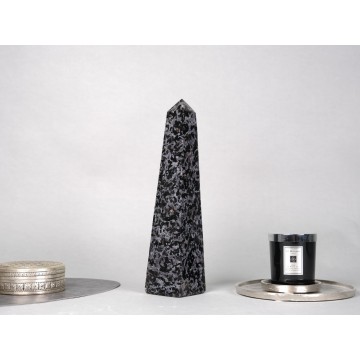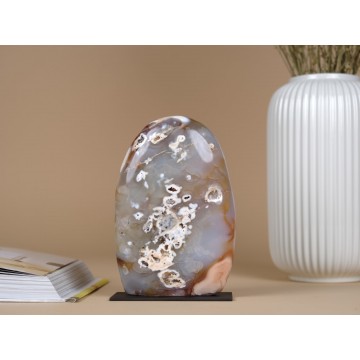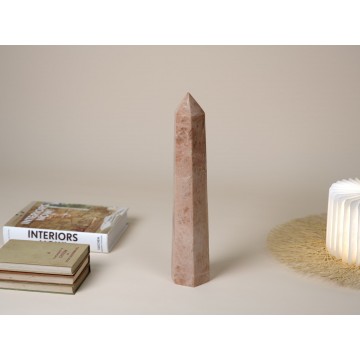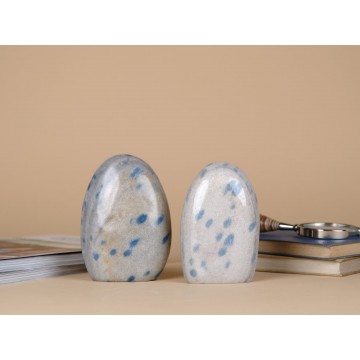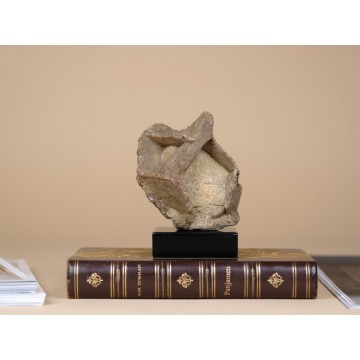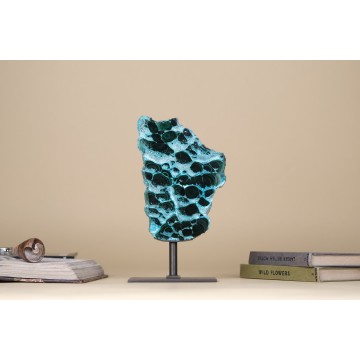This beautiful polished septarian egg, from Madagascar, shows its interior crystallization in contrast with exterior colors, in a brass stand.
Septarias are prehistoric marine nodules of bio sedimentary origin followed by dehydration during diagenesis, which today are found as large pebbles in clay soil. The creation of a Septarian is a succession of events along millions years, they form around a core of organic matter (plant or animal).
Sediments continue to settle on the nodule, compacting it under their weight which will flatten it and expel water, while inside micro-cracks begin to form, amplified by tectonic movements. It is in these shrinkage slots that over time dissolved minerals will crystallize.
Its name comes from the Latin "septum" which means partition, barrier, indeed, the polishing of the nodule reveals and sublimates its elegant marbling of black calcite, millions of years that offer these sumptuous minerals, each piece is unique!

